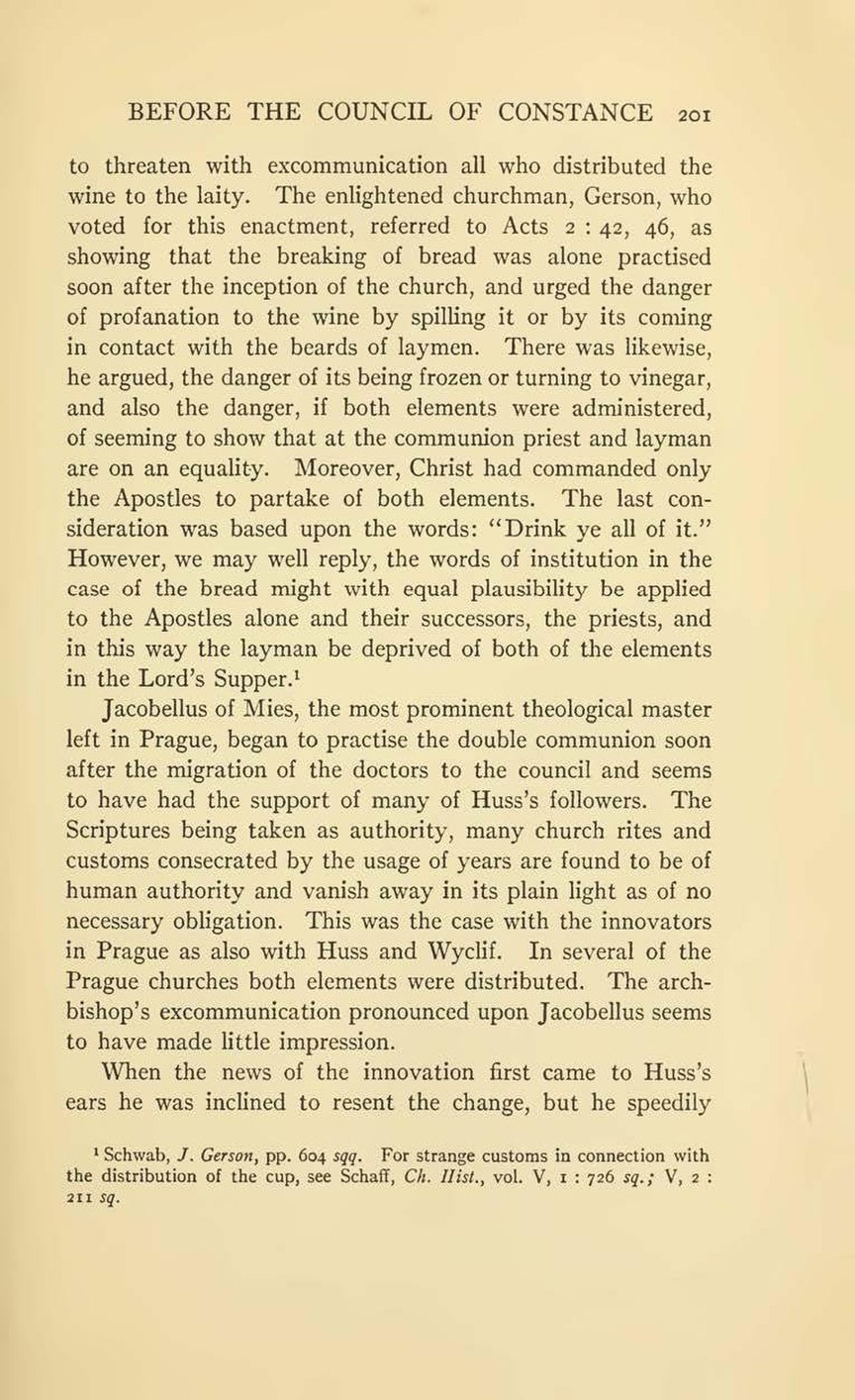to threaten with excommunication all who distributed the wine to the laity. The enlightened churchman, Gerson, who voted for this enactment, referred to Acts 2: 42, 46, as showing that the breaking of bread was alone practised soon after the inception of the church, and urged the danger of profanation to the wine by spilling it or by its coming in contact with the beards of laymen. There was likewise, he argued, the danger of its being frozen or turning to vinegar, and also the danger, if both elements were administered, of seeming to show that at the communion priest and layman are on an equality. Moreover, Christ had commanded only the Apostles to partake of both elements. The last consideration was based upon the words: “Drink ye all of it.” However, we may well reply, the words of institution in the case of the bread might with equal plausibility be applied to the Apostles alone and their successors, the priests, and in this way the layman be deprived of both of the elements in the Lord’s Supper.[1]
Jacobellus of Mies, the most prominent theological master left in Prague, began to practise the double communion soon after the migration of the doctors to the council and seems to have had the support of many of Huss’s followers. The Scriptures being taken as authority, many church rites and customs consecrated by the usage of years are found to be of human authority and vanish away in its plain light as of no necessary obligation. This was the case with the innovators in Prague as also with Huss and Wyclif. In several of the Prague churches both elements were distributed. The archbishop’s excommunication pronounced upon Jacobellus seems to have made little impression.
When the news of the innovation first came to Huss’s ears he was inclined to resent the change, but he speedily
- ↑ Schwab, J. Gerson, pp. 604 sqq. For strange customs in connection with the distribution of the cup, see Schaff, Ch. Hist., vol. V, 1: 726 sq.; V, 2: 211 sq.
